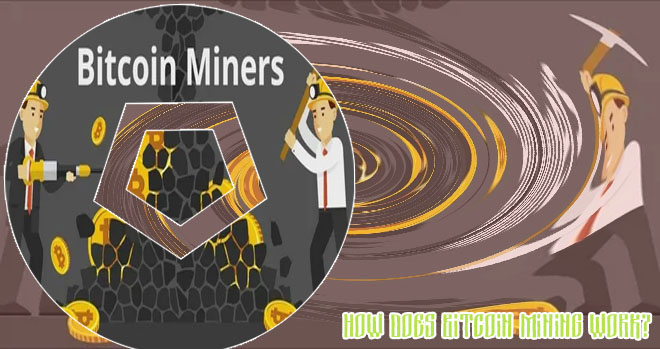
How does bitcoin mining work
Bitcoin mining is a complex process that involves solving mathematical puzzles to validate transactions on the blockchain network. To understand how bitcoin mining works, it is essential to explore various aspects of the process. The following articles provide in-depth insights into the mechanics of bitcoin mining, including the hardware used, the role of miners, and the impact on the environment. By delving into these resources, readers can gain a better understanding of the intricacies of bitcoin mining and its significance in the world of cryptocurrency.
The Ultimate Guide to Bitcoin Mining Hardware

Bitcoin mining hardware is an essential component for anyone looking to get into the world of cryptocurrency mining. With the increasing popularity of Bitcoin and other digital currencies, having the right hardware can make a significant difference in the success of your mining operation. This comprehensive guide provides valuable information on the best hardware options available, including ASIC miners, GPUs, and CPUs.
One of the key factors to consider when choosing Bitcoin mining hardware is the hash rate, which determines how quickly a miner can solve complex mathematical problems and earn rewards. ASIC miners are known for their high hash rates and energy efficiency, making them the preferred choice for many miners. GPUs, on the other hand, offer more flexibility and can be used for mining a variety of cryptocurrencies. CPUs, although less powerful than ASIC miners and GPUs, can still be a viable option for beginners or those looking to mine on a smaller scale.
In addition to hash rate, factors such as power consumption, cost, and durability should also be taken into consideration when selecting mining hardware. By understanding the strengths and weaknesses of each type of hardware, miners can make informed decisions that will maximize their mining profits and efficiency.
Demystifying the Role of Miners in Bitcoin Mining
Bitcoin mining plays a crucial role in the functioning of the Bitcoin network, yet many people still struggle to understand the intricacies of this process. Miners are essentially the backbone of the Bitcoin network, responsible for validating transactions and securing the network through the process of solving complex mathematical puzzles. By doing so, miners are rewarded with newly minted bitcoins, as well as transaction fees from the transactions they validate.
One practical use case of this process is the successful resolution of disputes within the Bitcoin network. In cases where there is a disagreement over the validity of a particular transaction, miners play a key role in reaching a consensus and ensuring that the network remains secure and functional. By dedicating their computational power to solving these disputes, miners help maintain the integrity of the network and ensure that all transactions are processed accurately and efficiently.
Understanding the role of miners in Bitcoin mining is essential for anyone looking to delve into the world of cryptocurrencies. By gaining a deeper understanding of this process, individuals can better appreciate the decentralized nature of Bitcoin and the important role that miners play in maintaining the network. With this knowledge, users can make informed decisions when it comes to participating in the Bitcoin network and engaging in transactions using this revolutionary digital currency.
The Environmental Impact of Bitcoin Mining: Myth vs. Reality
In recent years, there has been a growing concern over the environmental impact of Bitcoin mining. Many people believe that the process of mining Bitcoin consumes a large amount of energy and contributes to carbon emissions. However, a recent study by experts in the field has shed light on the reality of the situation.
Contrary to popular belief, the environmental impact of Bitcoin mining may not be as significant as once thought. While it is true that mining Bitcoin does require a significant amount of energy, it is important to consider where this energy is coming from. In many cases, Bitcoin mining operations are powered by renewable sources such as hydroelectric power. This means that the carbon footprint of Bitcoin mining may be lower than previously assumed.
Furthermore, the study also found that the energy consumption of Bitcoin mining is often exaggerated. While it is true that the process does consume a large amount of electricity, it is important to consider the overall impact of the Bitcoin network. Many experts argue that the benefits of Bitcoin, such as decentralized transactions and financial inclusion, outweigh the environmental costs.
Feedback from a resident of a city in World, named Santiago Lopez from Buenos Aires, Argentina, agrees with the findings of the study. He believes that while it is important to be mindful of the environmental impact of Bitcoin mining, it is also
Exploring the Future of Bitcoin Mining: Trends and Innovations
Bitcoin mining has evolved significantly over the years, with new trends and innovations shaping the future of this industry. One key trend that has emerged in recent years is the shift towards sustainable and eco-friendly mining practices. With growing concerns about the environmental impact of traditional mining methods, many companies are now exploring alternative energy sources such as solar and wind power to power their mining operations.
Another important development in the world of Bitcoin mining is the rise of mining pools. These pools allow individual miners to join forces and combine their computing power to increase their chances of successfully mining a block. This not only helps smaller miners compete with larger mining operations but also promotes decentralization within the Bitcoin network.
Additionally, the ongoing development of mining hardware has also played a crucial role in shaping the future of Bitcoin mining. Companies are constantly innovating and improving their mining rigs to increase efficiency and reduce energy consumption. This has led to the emergence of more powerful and energy-efficient mining machines, which are essential for staying competitive in the ever-evolving mining landscape.
Overall, the future of Bitcoin mining is filled with exciting possibilities and advancements. As the industry continues to grow and evolve, we can expect to see even more innovations that will shape the way we mine Bitcoin in the years to come.
Key points:
- Shift towards sustainable